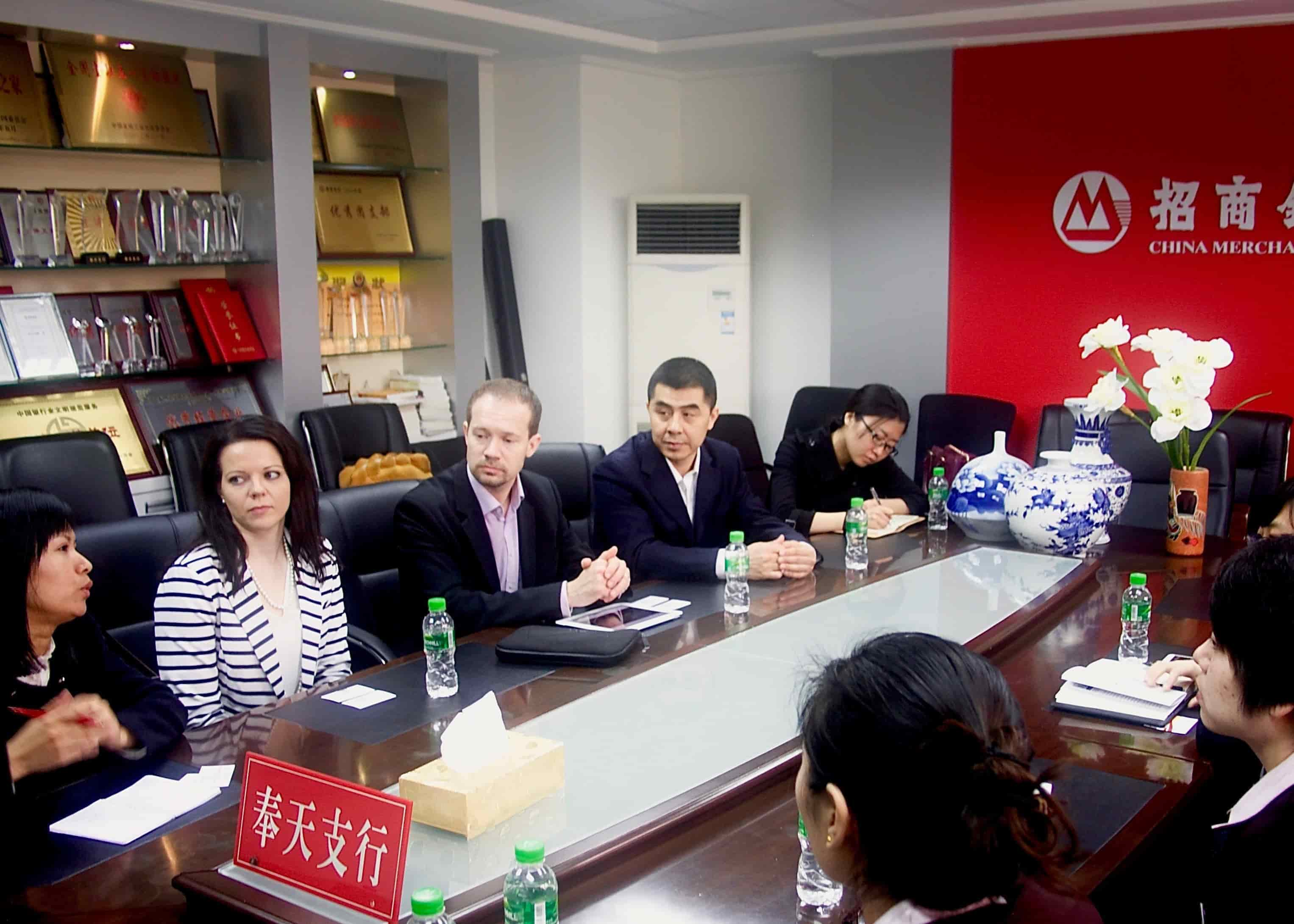September 24, 2019
We asked experts in different fields whether the rise of China is a threat or an opportunity. The survey we commissioned with Taloustutkimus, an independent market research company operating in Finland, tells what 200 business decision-makers think about it.

Tuomas Kosonen, Partner, Inventure Oy:
“Understanding what creates value is essential”

Many of the companies we finance are small. We see that the Chinese are very interested in our start-ups, and we believe that the interest will keep growing.
Getting into the Asian and Chinese markets is a challenge, and Chinese investments make it possible for small companies to grow and make the leap into Asia. In fact, this is the biggest opportunity with regard to competitiveness: potential channels to the biggest markets in the world are created through Chinese buyers.
Business always involves threats, revolutions and change. The Chinese are not the only ones interested in good companies. Americans are also actively buying technology companies, and if anything, the Chinese investments act as a balance. They also finance growth companies in parallel with us, either together or separately.
China is willing to grow and change. It meets the technological challenges of today and wants to resolve major problems. China has different rules from us and it provides strong government support for foreign investments. You just have to be able to live with that. Finnish companies need to try to understand the objectives of their Chinese partners and what they are aiming at with their investments, cooperation or purchases. The seller must carry out its own careful due diligence in business acquisitions.
Inventure builds an IP strategy for all portfolio companies. We make sure that the strategy exists and that it’s maintained. In the IP strategy, the essential thing is to understand where your own core competence is and what creates value. We strongly advocate the opportunities of China and call for both IP and Chinese strategies. Today, the final winner is the one that creates the best product the most efficiently – not the one that can copy it best. Here, the IP strategy plays an important role: how do I keep the core competence for myself and increase the value?
Timo Anttila, Patent Manager, ABB:
“You have to be a bit smarter than the others in order to succeed”

The Chinese want to get to the top of technologies quickly, and they can definitely buy their way in. They pick and choose carefully and buy technology, know-how as well as IPRs that benefit them. The threat is that with its great resources, China will become a world power that leads everyone else by the nose.
Many high-quality Finnish, European and American products are already manufactured in China. However, the culture of copying still lives on. Right now, I have a Chinese copy of an ABB switch on my desk. The manufacturing quality is so high that it’s hard to tell if it is the original product or a copy. When a Finnish company has production, subcontracting or a joint venture in China, know-how inevitably slips out. Risks do exist, but similar risks exist also on other markets.
At the same time, China offers incredible opportunities. Today, China is always included in the IP strategies of all of our business units and in the basic IP protection palette. In China, our company not only has a large market but also manufacturing of products created in Finland and even product development for new products. I have already processed patent applications for inventions made in China. In general, the Chinese are still lagging a bit behind us in innovation, but for how much longer can we keep this advantage?
You always need to be a bit smarter than your competitors in order to succeed. We at ABB Finland think that we’re very innovative, and in fact, innovation is needed both for products as well as production technologies. The worst competitors of an international company like us can be found in-house: if you’re not innovative and successful on the market, the production or product development will find a new address. It keeps you alert.
Product development and production that requires good engineering skills in particular has clustered in Finland. However, we have proved that we can make inexpensive products, too, as long as they’re made efficiently.
Heikki Vuorikoski, Founder & Business Development Manager, Montisera:
“If you aren’t good at negotiating, you can’t operate in China”

Heikki Vuorikoski (third from left) negotiating with investors in the Liaoning Province in China.
We have been cooperating with the Chinese actively for five years. I have found skilled partners in the scientific and research world there for the further development of our promising bioactive compounds for pharmaceutical industry. For example, our drug molecules for the treatment of alcoholism and Parkinson’s disease have been synthesized in China. In addition, we are currently negotiating licence agreements in China for the health beneficial Qusitol® extract made out of spruce sawdust, which we are commercialising for the use of pharmaceutical and food industry.
When you are doing product development and licensing business in China as a Finnish company, you have to prepare for it carefully: you need good agreements as well as patent and trademark protection. Recently, the attitude of the EU towards China has become much more reserved, and threats have been identified in a new way. Chinese companies are a threat, but they are also potential cooperation partners for Finnish companies. In addition, the Chinese market has staggeringly enormous potential: do you want to aim for one hundred per cent of the Finnish market, or one per mille of the gigantic Chinese market?
The agreement negotiations must always include a native speaker of Chinese who is familiar with the business culture. The Chinese like to use their own agreement templates and aim to agree on the terms on the Chinese level. The cities or provinces to which the agreement applies must be specified and limited geographically in licence agreements in particular. It is not in the best interest of a small company to leave out business opportunities ‘in a hurry’ already at the starting line. Roughly speaking, the Chinese ethics and understanding of business is that if you haven’t protected your rights, if you’re badly prepared and you negotiate hastily, you deserve to be swindled.
Finnish companies are innovative. Montisera’s foreign investors are also convinced of it, and they have stated that ‘everything that comes from Finland is innovative and of high quality’. The Finnish scientific world is just a bit too eager to publish its patent-worthy innovations in scientific articles. They should aim at getting much more out of them than just honour and glory.
Riikka Tähtivuori, Senior IPR Advisor, the Confederation of Finnish Industries (EK)
“Threats are visible in market distortions, obstacles to trade and challenges of IP legislation”

The Chinese have invested relatively little in Finland so far; the most significant investment has been the Supercell sale that was worth billions. It is now evident in other fields, too, that significant investments may be made in Finland. The threats related to China are considered to have grown.
The threats are related to the Chinese state subventions in particular, and thereby also market distortions and obstacles to trade, such as discriminatory practices in investments and public procurement. Growing threats are also related to the digital economy, as well as IP challenges linked to technology transfers.
Finns know how to innovate, but only 39 per cent of companies are innovating in joint projects. The cuts of innovation funding in Finland in the recent years have reduced the multilateral cooperation between companies, universities and research institutes. Investments in R&D&I have been promised during this term of government, which means that more innovations may also be created in joint projects in the future.
Our legislation is not completely clear on who owns the IP rights and how these rights are transferred, when a consortium creates some kind of intellectual property: patentable inventions, databases, copyrights and software. Innovations may also have remained unused commercially due to the confusing legislation. The problem can be tackled through agreements, but the legislation must also be updated for the digital age so that it supports innovation between private and public parties.
It is worrying that according to a study by Kolster, only 26 per cent of companies have an IP strategy. It is nevertheless clear that the importance of intellectual property in business grows together with digitalisation and the data economy. Developing expertise and legislation that supports business are important matters from the point of view of SMEs in particular.
Studies by the European Union Intellectual Property Office (EUIPO) show that the IP-intensive European industry already constitutes 90 per cent of the trade of the whole EU and more than 40 per cent of the gross domestic product. In Finland, too, IP-intensive fields such as the software and database industry have enjoyed strong growth, also in terms of copyright revenue.
Is your company heading for China? This is how Kolster China Desk™ can serve you
Take these issues into account in the Chinese market
READ MORE ABOUT THE IPR SURVEY 2019 AND INSIGHTS
China's potential lies in intense competition